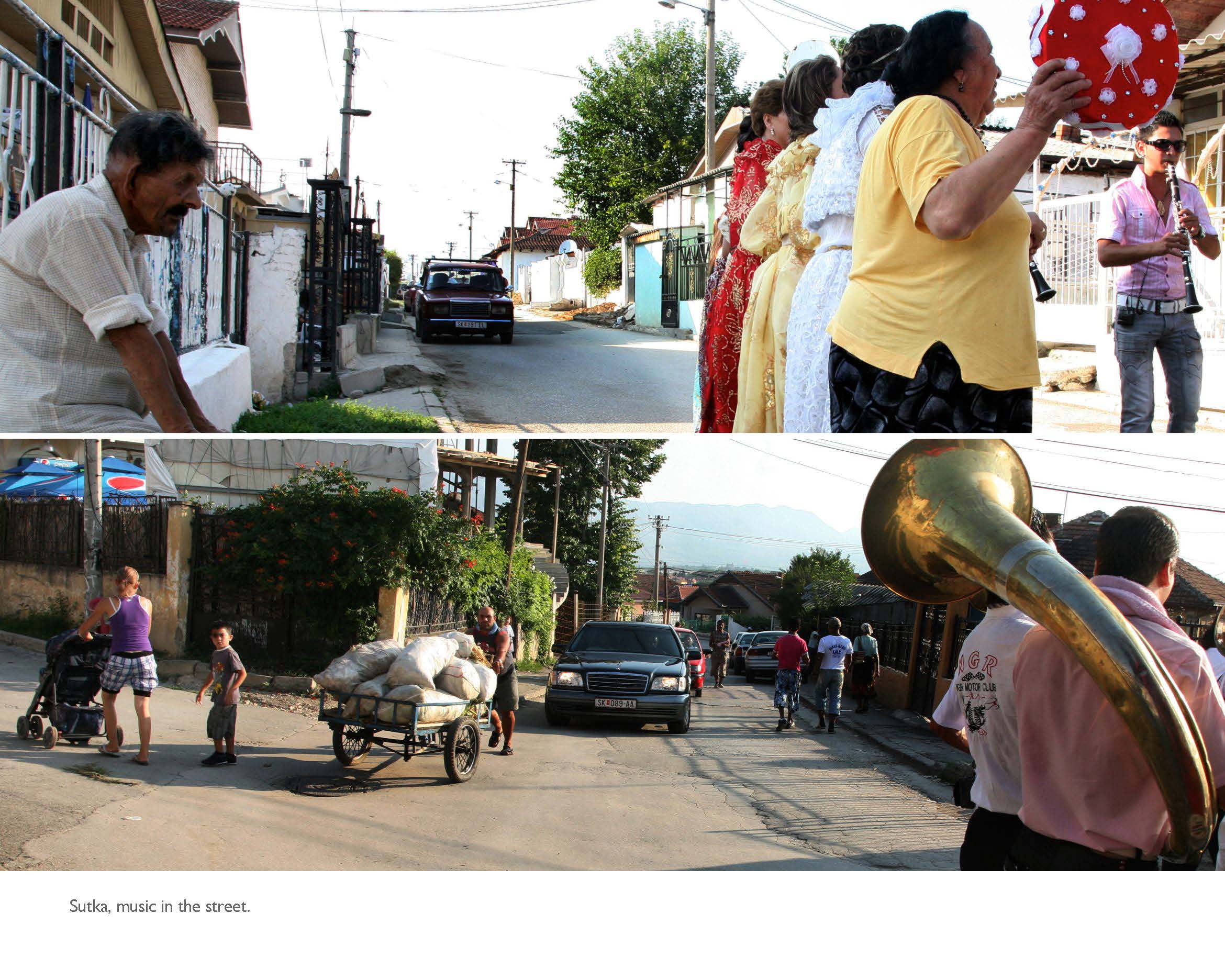In order to understand the Roma music and dance, most of the time, one has to understand the mahala (neighborhood) and the social fabric of the Roma community. Usually the communities in a Roma settlement are based on hierarchy, clan and neighbors. So, most of the Roma dances from the Balkan countries (Macedonia, Serbia, Bulgaria, Kosovo, Albania, Greece, Turkey) are to a large extent part of Roma survival and existence. Let me explain a little bit more these phenomena. For Roma in general, it is very important to celebrate weddings, circumcision, baptism and holy holidays and thanks to this, Roma have survived for 1000 years, since their arrival from India in Europe and elsewhere.

Most of the Roma artists, musicians and dancers, have been preserving the traditions of the Balkan countries, mentioned above, in spite of discrimination, racism and state sponsored policies that are very harsh towards Roma populations. Though many of these countries would never sponsor the Roma communities to preserve their music, dance or costumes, Roma have been very successful in keeping their culture alive. To this very day, quite some of the “Gypsy” shows are a huge attraction for the audiences. However, when it comes to talk about Roma culture, arts, music, education and dance, managers and music industries fail to highlight the human rights issue or to explain better what is Roma culture about.
Mahala dances in the Balkans are mostly based on community coming together as a social gathering, not as a place for “individuality”. For this kind of gathering, individuality has no room and place, so it requires the entire community engagement, especially paying notice to “elderly” family members. The majority of the dances are in various rhythm forms, such as 2/4, 7/8, 9/8, 12/8 and there are many more of these complex rhythms. The dances that I teach are mostly from these communities, or mahalas, and there is not so much choreography, because - as I mentioned above - these Balkan states would rather promote the countries “nationalism” than the cultural treasure of minorities, either before or after the fall of the Communism.
Mahala dances come in various forms and steps, the most common one that I teach is “pharo” horo, which translates into: “heavy dance”. In Bulgaria, Serbia, Kosovo and Macedonia, they also call it: “teškoto”. Usually this “horo” is danced in an open circle. In some places, there are only women dancing without a single man in a circle, due to the fact that some of the Roma have adopted the Muslim religion. Also only men’s circles exist. The pharo horo is known too as: Man’s dance. Another common dance throughout some of these countries in Eastern EU amongst Roma is called: Čoček (MK, SRB, KS) or Ќyček (BG). The Čoček is mostly played on 2/4 or 7/8 rhythms with its variations. This is the dance that predominates in all dance gatherings in Roma settlements.
Other forms of dances are also well-known such as Pravo, Gajda, Telo vas and many more. Since the fall of the Communism and the collapse of ex-Yugoslavia, many young Roma lost these dances, whereas older generation are not able anymore to dance the way they used to do when they were younger. Many mahalas have been destroyed and do no longer exist, due to war, gentrification or economic changes. During my dance seminars across the EU and the Balkans, it often occurs that young Roma cannot believe their eyes when they see how Germans, Austrians, Swedish or Norwegians are performing their traditional dances. They are deeply impressed by the foreigners who - Balkan dancing followers - are preserving the old dances and songs. One can hear the young Roma say: “Oh that’s how used to dance my grandmother, uncle or older community members.”
As a dance instructor, I take a huge pride in preserving these dances and as well as in preserving the Roma traditional songs. Given that Roma don’t have a country or state to sponsor their cultural treasure, I feel very lucky that I have an opportunity to make and keep it “alive”, together with numerous participants starting from US and Canada and many EU countries. So, I am really looking forward to share my art with Balkan dancers and singers and hope we can keep spreading a culture that has been ignored and misunderstood for so long, far too long. It is time to shine the lights on the bride side of Roma culture. Opa!
(Šani Rifati) - die Deutsche Übersetzung
Photo: (c) Voice of Roma
- Anmelden oder Registieren, um Kommentare verfassen zu können
